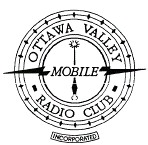There are several hams in the National Capital Region who have joined the Ham Shack Hotline VoIP service. For those who aren't familiar with this, it's essentially a VoIP telephone service tailored and restricted to use by radio amateurs world-wide. There is no monetary cost to join or use this service, only to register your call sign with the Ham Shack Hotline (HSHL) providers in the U.S. and get a personal phone number in return. To learn more about it, go to the HSHL web site:
To the point of this article: while the HSHL service works rather well and provides access to internet-connected radio nets in addition to the VoIP service, it has been an inconvenience to me having to hard-wire the phone deskset to my router and I've long thought about whether there is a way to concoct a wireless interface so as to make the phone more portable. Well, yes, there is a way and it's called a WiFi Range Extender. These are available from most electronics retailers for something between $50-100, however, being a ham and having the natural "do-it-on-the-cheap" streak that comes with it, I was looking for a less expensive solution. Trying to configure a conventional consumer-grade WiFi router among those resting in my parts collection just didn't work although I'll admit I didn't explore it very deeply and there might be a way to convince a WiFi router to work as a client interface; but to my great fortune, a solution fell into my lap as a result of the ongoing house un-cluttering mission. It must have been 10 years ago that I bought a DLink range extender in an attempt to improve the WiFi signal in the ham shack. That didn't work too well so it went into a box along with other stuff that wasn't useful at the time, but kept in the hope of use in the future. Well, the future is now and after doing a bit of setup, the range extender is now functioning admirably well as a wireless client interface to my Cisco phone.

So - problem solved. A few tests of voice conversations with Jonathan, VE3OTW and Norm, VE3LC confirmed that the system works just as well as it did when it was hard wired to my router. As for details, the device is a DLink DAP-1360 Wireless N Range Extender and the phone set is a Cisco SPA504G. The DAP-1360 is at least 10 years old and is probably obsolete by now but there are equivalent devices currently available from DLink and other manufacturers.
There are a few caveats to consider. Firstly, if you're looking to use a range extender, make sure that it has an ethernet port and is configurable as a "WiFi Client". The DAP-1360 can be configured as a WiFi Repeater, Access Point (aka hotspot) or Wireless Client. It is the wireless client mode that applies here in which the normally wired device plugs into the range extender's LAN port and is connected to the home LAN through the WiFi link as another network WiFi client.

Another aspect to consider is how heavily one's WLAN is loaded, such as the number of simultaneous wireless gaming connections that might be running due to family harmonic activity. The WLAN "pipe" has only so much capacity and you could run into contention issues which would cause packet drops/retransmissions on the VoIP link. As Bill, VA3WBR pointed out in a conversation, one way to mitigate this is to assert a quality of service (QOS) constraint on the HSHL link. You'd have to dig into the advanced settings of your primary router to do this if bandwidth contention is a problem. I don't have this problem as my WLAN is very lightly loaded, so you're on your own there.
There is also a link security consideration. For users in urban areas, link encryption should be applied to get some assurance that your VoIP link remains private and there's no "open" port to your router that could allow easy entry for a mobile hacker. Even though I don't have this problem, I did enable WPA encryption with an 18-character key on my equipment and it didn't have any noticeable effect on the voice quality.
I hope this is of help to those who want to have their HSHL desk set situated in a place of their choosing rather than be tied down by a hard wired connection.
73,
Hugo, ve3ktn.
